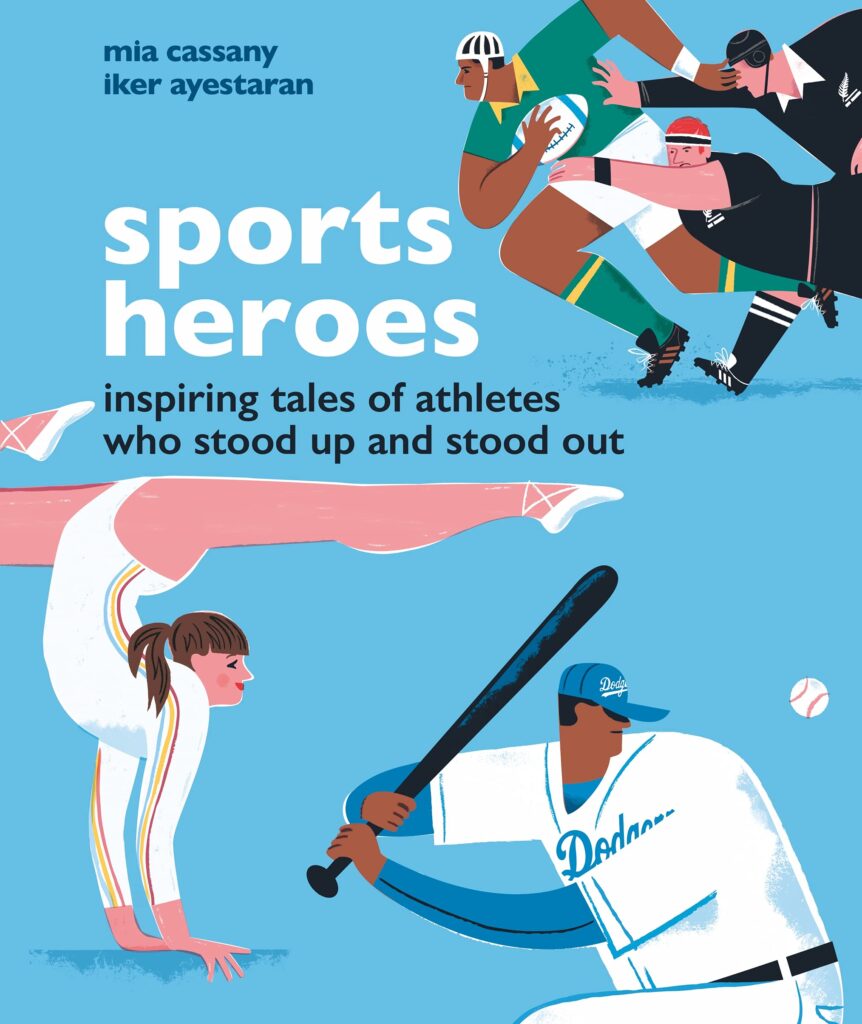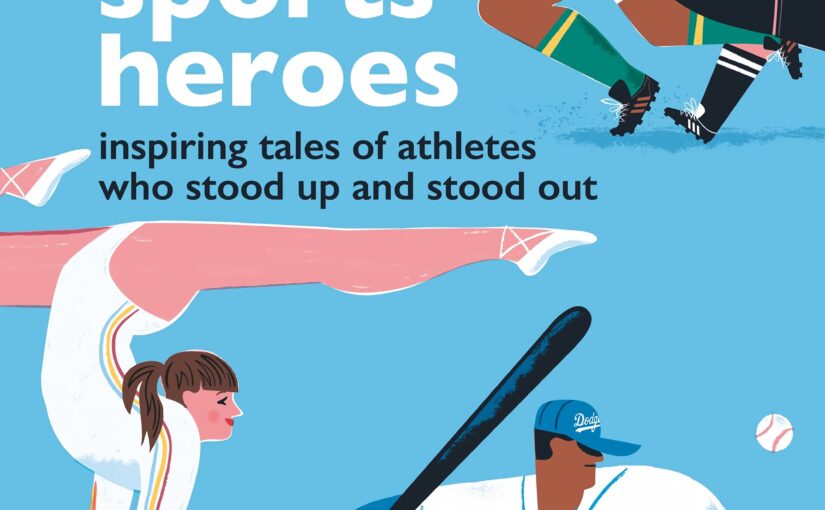The style of art that’s used in Sports Heroes is the type that makes elementary-aged readers effortlessly flock to it. The lines are crisp, its edges are sharp, it’s loaded with contrasting colors, the shapes are absurd-but not too silly, and everything has a retro look that’s at home for Mad Men or today’s eight-year-olds. What elementary-aged readers, as well as some middle school readers will come to terms with when they look through Sports Heroes, Inspiring Tales of Athletes Who Stood Up and Stood Out; is that sports-and a variety of them can bring about the best in people.

The ‘best in people’ phrase can be a cliché, some hackneyed words that people write about whilst describing the stereotype athlete. Frankly speaking, it’s that negative stereotype, when it’s being preached by a sports personality who has succeeded and is now annoyingly talking down the public, as to why sports isn’t attractive to me. Sports Heroes is not presented from the ivory tower of a multi-million dollar contract athlete who has sacrificed moving from one city to another. Rather, the book highlights 18 people from around the world who either changed their sport or the landscape surrounding it.
Moreover, the people highlighted in Sports Heroes are most likely not ones that they’re familiar with, unless they’re already fans of that activity. The exceptions to these are Muhammad Ali, Jackie Robinson, and Pele. Those names aren’t too common to elementary-aged readers, but are known by enough of them, either due to the sport’s popularity or the unique value of knowing an old-school star in the game.
The sweet spot for Sports Heroes is those people who pioneered; jump-started or revolutionized a sport. In some cases, it’s the story of the person that made it memorable and in other cases, it’s the barriers that they broke down. Katherine Switzer was the first woman to run in a marathon, but it wasn’t because she was allowed into the race with open arms. Chester Williams was the first black player on the South African rugby team, and he had some assistance from a very famous President, who was also an anti-apartheid revolutionary.
I had heard the term Fosbury Flop when it comes to the high jump competition in the Olympics, but I had no clue as to what it was. It was named after Dick Fosbury, a very tall athlete who was able to change the way that the sport is done. Because he was so tall, getting up that high and completely clearing the bar was challenging. Rather than giving up, he changed the way that he jumped, essentially curving his spine, slinking over the bar, and letting his legs follow him. This was weird, different, and not at all the way that other high jumpers did things, but it wasn’t prohibited by the rules and his results paid off in the 1968 Olympics when he scored gold.
Figure skating, cycling, table tennis, skateboarding, golf, swimming, mountaineering, and more are allowed to shine in the book too. Each profile is done on two pages. Both pages are fully colored, with the main illustration on one of them, and two to three paragraphs on the other page. The text is brief and provides a high overview of the situation or the time, and then drills down into the athlete’s accomplishment.
The text isn’t enough to do a comprehensive presentation for a fifth-grade level. It’s informative, but too brief to be used as the sole source of information for one individual or sport. Instead, Sports Heroes is a gateway book that’ll introduce young readers to people or sports that they almost certainly haven’t heard about. Sure they’ve heard about table tennis, but do they know a reason as to why one of the best players in the world rarely spoke? Or how about why Harry Vardon’s style of playing a good walk spoiled is still celebrated today?
The text in the book is a little small and certainly would’ve benefitted from a slightly larger font. The pages are large enough to have accommodated more space for the words, which would’ve added a bit more punch to their stories. Most fourth graders will be able to read it and all fifth graders should be able to read it. Even those lower middle school readers can use snippets of the book to add details to reports but will have to dig deeper into more sources to make the grade that they deserve. However, as the book stands, it’s a great introduction to sports personalities that helped pave the way, even if most of them aren’t front burner names.
Sports Heroes, Inspiring Tales of Athletes Who Stood Up and Stood Out is by Mia Cassany with illustrations by Iker Ayestaran and available on Orange Mosquito, an imprint of Welbeck Children’s Limited.
There are affiliate links in this post.





 Facebook
Facebook Twitter
Twitter Flickr
Flickr GooglePlus
GooglePlus Youtube
Youtube